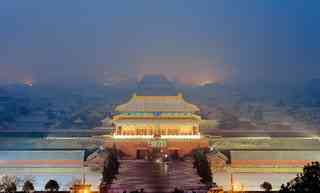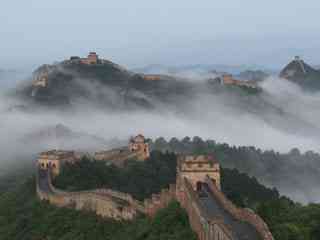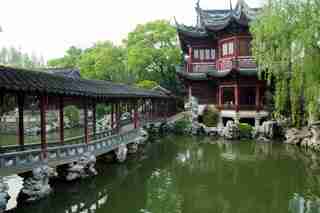The span in which the Ming dynasty ruled China (1368–1644) was a period of incredible political and cultural growth for the nation. It was during this era that China commanded influence of much of East Asia, Vietnam, and Myanmar to the south, while also expanding its sphere of control to the Turks in the west. Yet, the reign of the Ming dynasty has come and gone. What remains, however, is the spectacular architecture produced during this time. Builders of the period made use of existing techniques but also incorporated brick into its great walls and palaces. Here, AD surveys some of the most beautiful structures that remain from this important era in both Chinese and global history.

Shown is the Forbidden City, which served as the Imperial Palace during the Ming dynasty. Located in the center of Beijing , this architectural relic and UNESCO World Heritage site spans 178 acres (about one-fifth the size of New York’s Central Park) and attracts more than 25 million tourists each year.

One of the most iconic works of architecture in human history, the Great Wall of China was built during the Ming dynasty to protect the country from invaders. Stone, brick, wood, and other materials were used in its construction.

Located in Shanghai, the Yu Garden, or Happy Garden, was built in 1559 by Pan Yunduan, a local governor, to comfort his ailing father.
Named a World Heritage site in 2000, the Stele Pavilion in Ming Tombs , China, holds the tomb of the Hongwu Emperor, the founder of the Ming dynasty. Shown is the beautifully designed entranceway to the structure.
Constructed during the Ming dynasty and located near Myanmar, the Chang Mansion contains over 4,000 rooms.
Built in 1559 was the Yu Garden, or Garden of Joy, which is located in Shanghai.
When the Lama Temple was built in 1694, it was intended to house royal servants. It is located in Beijing.
Located roughly 500 miles south of Beijing is the Lingxiao Palace, a government headquarters for religious affairs during the Ming dynasty.
